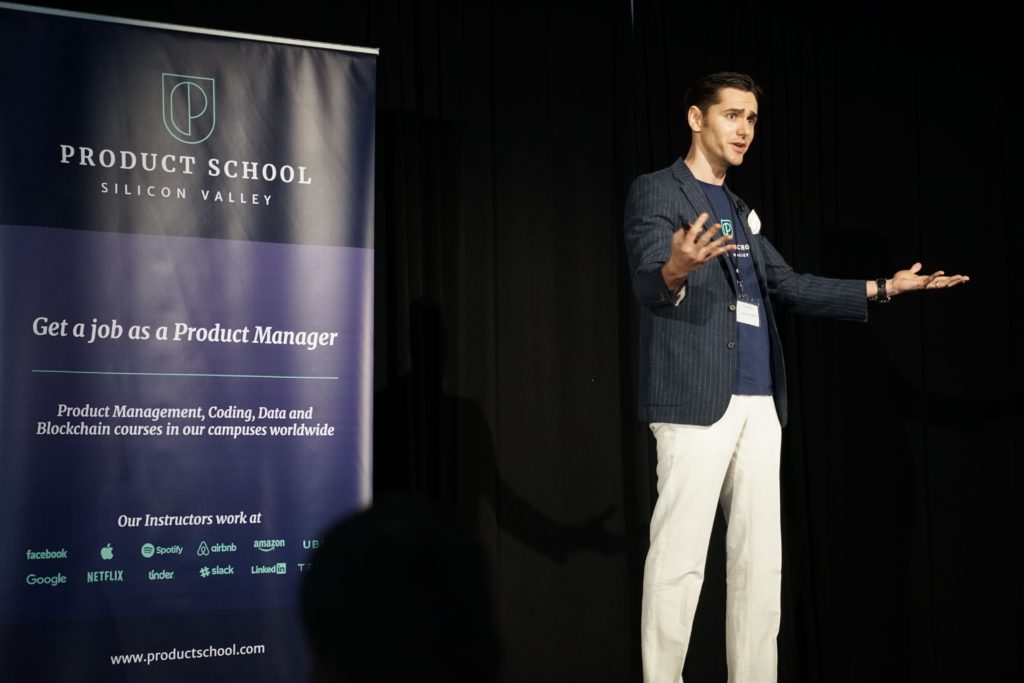Industry leaders and experts have an opportunity to impact and influence their audience with their work and words. However, they can’t assume just sharing what they know is enough to get people on the edge of their seats.
Many presenters make the mistake of thinking their reputation, expertise, or subject matter will be enough to hold the audience’s attention. But this notion may leave audience members, at best, wanting more, and at worst, wanting to leave.
Yes, knowledge and content are important for establishing credibility and peaking interest. But to bring listeners to their feet, presenters need to figure out how to get in their heads.
Here’s how to deliver a presentation that will get an audience off their phones and out of their seats!
What Is Audience Engagement?
Audience engagement seems to be a ubiquitous goal across marketing campaigns, and at the same time, the holy grail as far as definitions and measurements go. Every brand wants audience engagement, yet few can actually define it. Regardless, pretty much everyone will agree, when a brand achieves it, they grow.
For our purposes, we’ll keep it simple and to the point: audience engagement is the extent to which the audience responds to content in a positive manner.
Related Link: 15 Live Event Hosting Tips by the Event Experts at Van Wagner
Tips for Increasing Engagement
But how do you increase engagement, exactly? Although experts have yet to carve out an exact science, here are the best techniques speakers can use to make a statement and an impact on their audience.
Tell a Story, in both Form & Function
To capture an audience effectively, speakers should approach a presentation like they would a story, using the same structure as any great movie or myth, both in form and function. A story, in form, has a clear beginning, middle and end.
The beginning sets the stage, introducing the overarching issue that needs to be solved and a clear call to action. The middle presents a series of contrasts or challenges that lead the audience through the struggle to find a resolution to the overarching problem.
And the end provides the audience a clear resolution to the problem, hopefully, leaving them inspired or transformed in some capacity.
By approaching a presentation like a story in form, it functions as more of a drama, keeping the audience intrigued and entertained, instead of trying to power through yet another PowerPoint.
Fill in the Gaps with Elements of Surprise
Let’s face it, with increasingly shortened attention spans and an unlimited amount of distractions at their fingertips, today’s audience makes for a tough crowd. Telling a good story is essential, but presenters need to recruit as many senses as possible to keep listeners in the game.
Surprise tactics, done tactfully, are a great way to get people to set up and pay attention. Visuals always help, and the more eye-catching, the better. But even diagrams and graphs will help to break up visual monotony and clarify information.
Sharing a startling statistic or posing an open-ended question are additional ways to get a reaction out of distracted minds.
And never underestimate the power of humor for shaking things up. When relevant to the topic at hand, integrating funny content or personal stories will give the audience a chance to laugh while helping to build rapport and connection.
Connect with Your Audience

Yes, content is king, but it will most likely fall on deaf ears without an effective delivery, which means establishing a strong connection with viewers. This is where authenticity comes in.
Presenters will maximize connection and audience involvement by making their story and topic relevant and personal. When presenters show their human side, including their quirks and vulnerabilities as appropriate, they evoke empathy and human connection from the audience.
Even inviting others to share their stories in the right format can strengthen connection and rapport, establishing common ground and a shared human experience.
And of course, there are the more technical strategies speakers can use to build rapport with their audience, such as making eye contact, speaking in casual, down-to-earth manner that isn’t pretentious or bogged down with overly technical jargon.
Present like a Pro

There are reasons why certain world leaders’ speeches leave such powerful and lasting impressions on their followers. There is an art and science to storytelling that can be easily replicated with the right approach and a little practice.
Repetition or Rule of 3’s: When a phrase, a word, or idea is reiterated strategically, they will stick. It’s common knowledge that repeating something three times will take hold in listeners memory.
But when done well, speakers can frame concepts differently and more completely, emphasizing the main points in a more compelling way each time for a more dramatic effect.
Real-life examples: It’s common to hear powerful speakers share a personal story—their own or someone they know—that reflects the struggles, values, or triumphs they are trying to represent. This makes a person that might appear “larger than life” on stage seem more relatable and in touch with the human experience.
Slogan, metaphors or symbols: Short, pithy statements or acronyms provide mental shorthand for listeners, making abstract or complicated ideas more digestible and concrete.
Charisma: Presenters who appear bold, confident, and speak with authority are highly effective at captivating an audience. Sprinkle in a bit of personality, and listeners will be smitten long before the closing remarks.
Have an upcoming event where you will be speaking? Contact Van Wagner to increase your audience reach and extend your engagement.
Related Link: Giveaways: 10 Meaningful and Clever Audience Gifts that Leave a Lasting Impression
End on a High Note
First impressions are one thing, but for a presentation, the ending is usually what seals the deal. But first, as speakers start to wrap things up, it’s critical to recap the key points and provide the audience with a clear summary that leads to a logical conclusion of the proposed thesis.
To end things on a memorable note, there are a few effective techniques that presenters can use. One such tactic is to refer back to the same thought-provoking quote or anecdote offered at the start of the speech but adding a different twist or new enlightened perspective.
To make the exit even more dramatic, speakers can challenge the audience to take a bold, new action toward making a change in their own lives, the lives of others, or even the planet. (Might as well go big before everyone goes home!)
Measuring Your Audience’s Engagement
In a world where analytics rule, marketers go to great measure to monitor viewer engagement numbers. But when it comes to live presentations, there are no likes, views, or shares to show how moved an audience is by the content.
However, the reality is, an audience will clearly demonstrate how engaged they are through their body language, physical reactions, and facial expressions.
Speakers know when they are working a room—whether from more obvious cues, such as clapping and laughing, or more subtle indications such as head nodding and eye contact.
Presenters also know all too well when they are losing the crowd, when viewers begin fidgeting, scrolling their phones, or worse, yawning or nodding off.
Data enthusiasts can solicit more detailed measurements from audience members via testimonials and surveys. But to get the concrete results, analysts need to create adequate incentive for listeners to participate and include questions that are specific enough to elicit quality feedback.
Final Word
Getting people to pay attention in a world full of distractions is harder than it used to be, but it’s not impossible. Integrating these tips into a presentation will set the stage for a performance that will make listeners forget that bullet points ever existed.
Even better, telling a tale that excites and delights, with sincerity and a bit of finesse will have audiences in the palm of the presenter’s hands… and most definitely, out of their seats!
For expertise on audience engagement, contact Van Wagner to speak with one of our consultants. Related Link: How to Acquire the Best Talent for Your Panelists and Keynote Speakers


